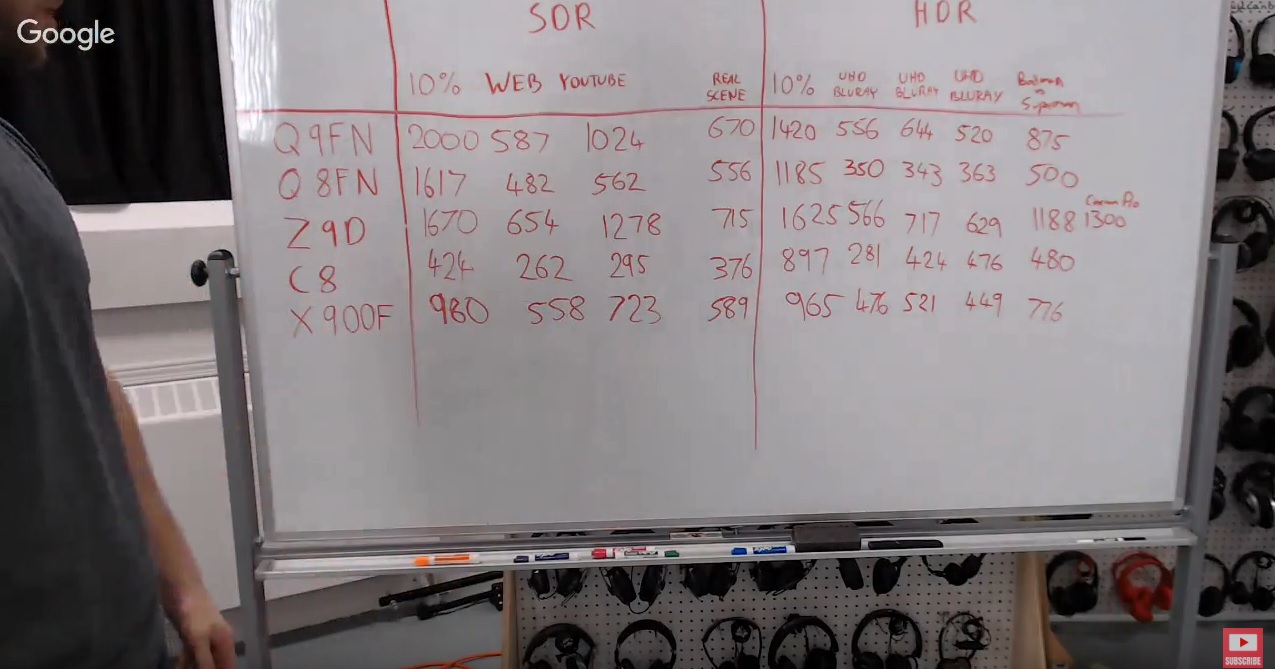Silent_Buddha
Legend
Hot damn looks like Z9D still reigns supreme in Brightness (real scene, peak level in both HDR and SDR) and Local Dimming. Hard to imagine even the Q9FN is beaten by a two year old model.
The gist of it.


Cool, looking at their reviews of all those sets at the YouTube link, the LG C8 is still the best general purpose display and best gaming display out of the LG, Samsung, and Sony sets although the Sony A8F and A1E are very close behind. The OLED sets obviously fall behind in peak brightness, but excel in almost all other areas. Especially black uniformity, local dimming, pixel response, and input lag.
Brightness is good for the Z9D as you mentioned, but it is definitely showing its age falling quite far behind relatively speaking in many other areas compared to the other sets.
Regards,
SB

